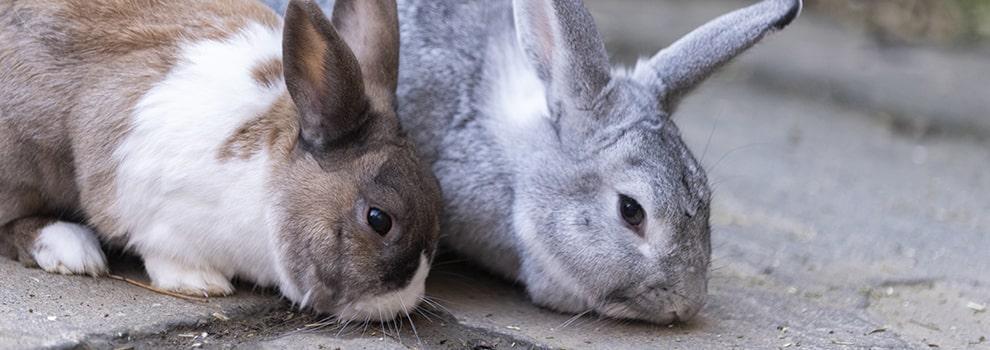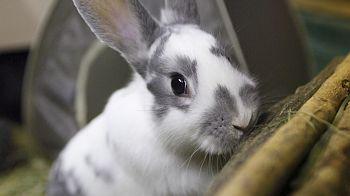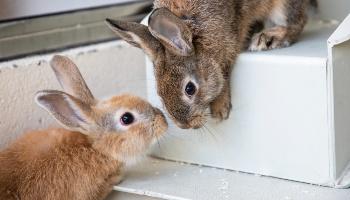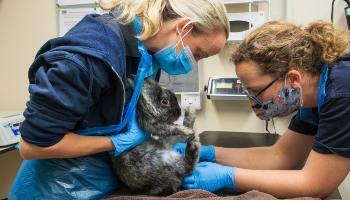How To Introduce Rabbits To Each Other | RSPCA - RSPCA
Neuter both rabbits before they meet
Male rabbits can take up to six weeks to become sterile after they're neutered. Females shouldn't be bonded with another rabbit immediately after neutering to reduce the risk of injury.
Start with side-by-side enclosures
Side-by-side enclosures help the rabbits to get familiar with each other from a safe distance. Provide a barrier between their enclosures that still allows them to see and smell each other, and to lie side-by-side. Each rabbit must be able to hide from one other whenever they want, so ensure they both have constant access to hiding places.
There may be some unrest in the beginning. This is normal and may last about seven days. Once they seem comfortable in one another's presence, try swapping some of the rabbits' nesting materials over, or rubbing a cloth over one rabbit and then the other to transfer scent.
Prepare a neutral area separate from their enclosures
This area needs to be somewhere neither rabbit has been housed before. Have hiding places and toys ready to put in the area, but leave it empty for when you first introduce them. Once the rabbits are comfortable with the sight and smell of each other, they can be introduced for short periods in the neutral area. Remember:
- Supervise - a familiar person should sit with them to supervise.
- Don't allow negative behaviour to escalate - while some negative behaviours are normal during introductions, these shouldn't be allowed to go too far. If they're mounting each other's heads, which may lead to injury, or showing severe or persistent aggression towards each other, they need to be separated immediately - be careful so that you don't also get injured.
- Keep the area empty - during the first few introductions, the area should be completely empty so you can watch them at all times. If the introductions are going well, you can introduce toys, hiding places, tunnels and so on. Make sure there are enough for both rabbits.
- Gradually increase the time they're together if it's going well, so they're spending supervised time together daily.
Good and bad signs when bonding rabbits
Look out for these signs to see whether or not your rabbits are getting along well.
Positive behaviour
- Sitting or lying side by side, even when the barrier is in between them
- Grooming each other
- Seeking each other for positive interactions
- Behaving normally around one another
Negative behaviour
- Chasing each other
- Mounting
- Fighting
- Growling
How to tell the rabbits have bonded
Once the rabbits are spending one to two hours together daily without any problems, they can be introduced into their intended living space, initially under supervision. Rabbits can be left alone together safely once they're showing positive behaviours towards one another.
Always speak to your vet for more detailed advice before attempting to bond rabbits. Be aware of the signs of positive and negative behaviour, and if you're concerned about your rabbit's behaviour, ask your vet.




